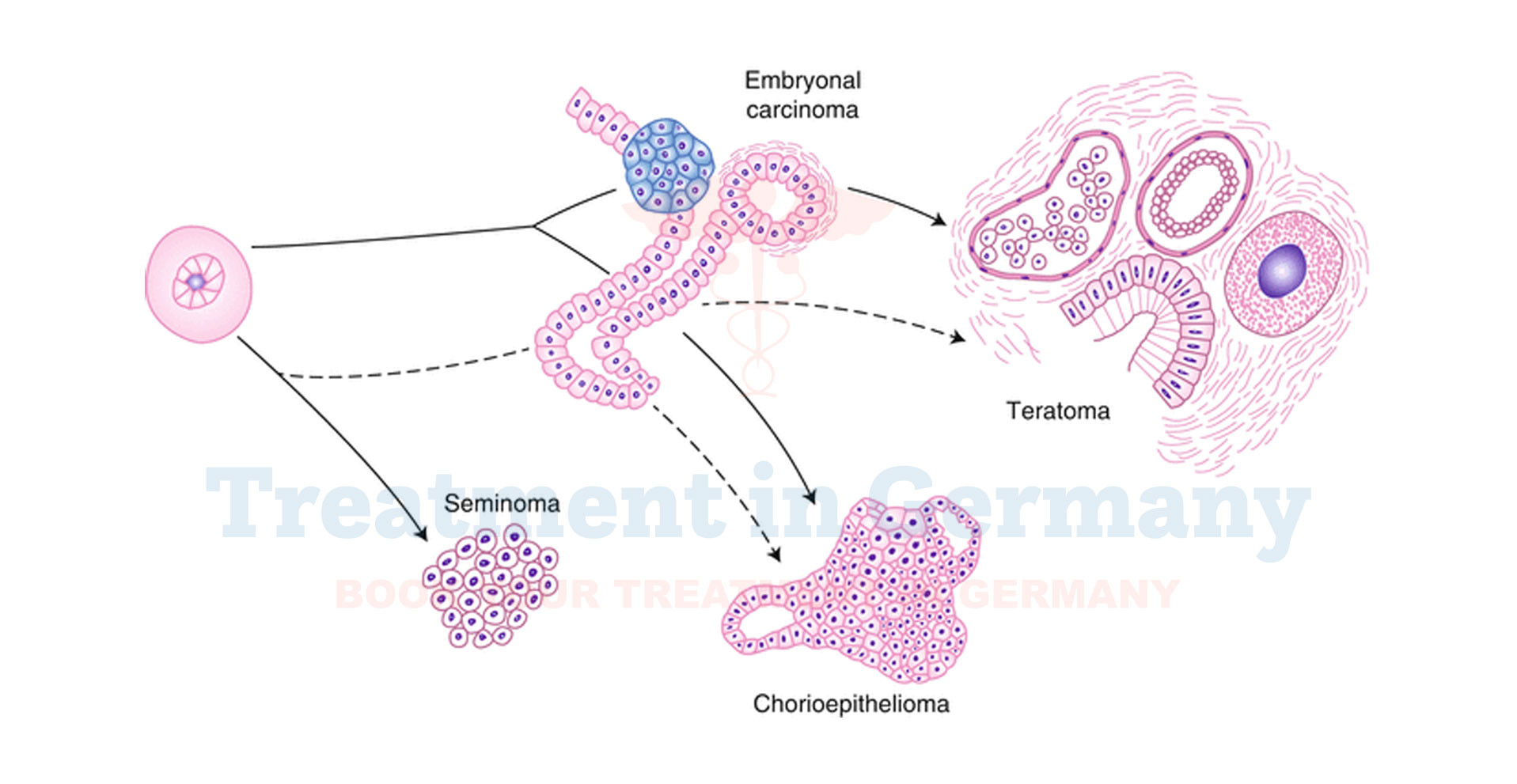What is Teratoma?
A teratoma is a type of tumor that can contain a variety of tissues, including hair, teeth, and even organs, as it originates from germ cells.
These cells are typically found in the ovaries or testes but can sometimes appear in other areas of the body. Teratomas can be benign (non-cancerous) or malignant (cancerous), and their characteristics can vary depending on their location and the types of tissues they contain.
Side Effects of Teratoma
The side effects of a teratoma largely depend on its size, location, and whether it is benign or malignant. Common symptoms and side effects may include:
- Pain or Discomfort: This can occur if the teratoma is pressing against other organs or tissues.
- Swelling: Especially noticeable in the area where the teratoma is located, such as the abdomen, pelvic area, or testicles.
- Digestive Issues: Such as nausea, vomiting, or changes in bowel habits if the teratoma affects the gastrointestinal tract.
- Urinary Problems: Difficulty in urination or increased frequency if the teratoma impacts the urinary tract.
- Hormonal Imbalances: In cases where the teratoma is in the ovaries or testes, it may affect hormone levels, leading to symptoms like menstrual irregularities or changes in sexual function.
In malignant cases, additional symptoms may include unexplained weight loss, fatigue, or other signs of systemic illness.
How is Teratoma Diagnosed?
Diagnosing a teratoma involves several steps:
- Medical History and Physical Examination: The initial assessment includes discussing symptoms and performing a physical examination to identify any abnormalities.
- Imaging Tests: Various imaging techniques such as ultrasound, CT scans, or MRI may be used to visualize the teratoma, determine its size, and assess its location.
- Blood Tests: Certain blood markers might be elevated in the presence of a teratoma, especially if it is malignant. Tests might include checking for tumor markers like AFP (Alpha-Fetoprotein) or HCG (Human Chorionic Gonadotropin).
- Biopsy: A definitive diagnosis often requires a biopsy, where a sample of the tumor is removed and examined microscopically to confirm the presence of teratoma cells and determine whether the tumor is benign or malignant.
Potential Treatment of Teratoma
Treatment for teratoma depends on its type (benign or malignant), size, and location. Common approaches include:
- Surgical Removal: The primary treatment for most teratomas is surgical excision. Removing the entire tumor is often the most effective way to eliminate it and alleviate symptoms.
- Chemotherapy: If the teratoma is malignant, chemotherapy may be used to target and kill cancer cells, especially if there is a risk of the cancer spreading.
- Radiation Therapy: In some cases, especially if surgery is not feasible or additional treatment is required, radiation therapy may be employed to target any remaining cancer cells.
- Follow-Up Care: Regular follow-up is crucial to monitor for any signs of recurrence or complications. This may include periodic imaging tests and blood work.
- Supportive Care: Depending on the treatment and its side effects, supportive therapies such as pain management, nutritional support, and psychological counseling may be beneficial.

.webp)
.webp)
 (1).webp)
 (1).webp)

.webp)
.webp)
 (1).webp)
 (1).webp)
